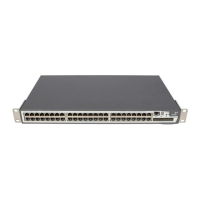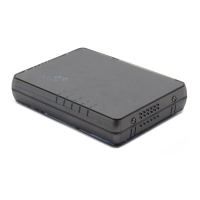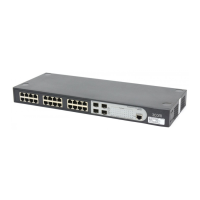PIM Configuration Commands 265
Use the undo c-rp to remove the configuration.
By default, no candidate RP is configured.
Related command: c-bsr.
Example
Configure the Ethernet Switch to advertise the BSR that it is the C-RP in the PIM
domain. The standard access list 2000 defines the groups related to the RP. The
address of C-RP is designated as the IP address of VLAN-interface10.
<SW5500>system-view
System View: return to User View with Ctrl+Z
[SW5500]multicast routing-enable
[SW5500]acl number 2000
[SW5500-acl-basic-2000]rule permit source 225.0.0.0 0.255.255.255
[SW5500-acl-basic-2000]quit
[SW5500]pim
[SW5500-pim]c-rp vlan-interface 10 group-list 2000
crp-policy Syntax
crp-policy
acl-number
undo crp-policy
View
PIM View
Parameter
acl-number
: ACL number imported in C-RP filtering policy, ranging from 3000 to
3999.
Description
Use the crp-policy command to limit the range of legal C-RP, as well as target
service group range of each C-RP, prevent C-RP spoofing.
Use the undo crp-policy command to restore the default setting so that no
range limit is set and all received messages are taken as legal.
In a PIM SM network, every router can set itself as a C-RP (candidate rendezvous
point) servicing particular groups. If elected, a C-RP becomes the RP servicing the
current group.
A C-RP router unicasts C-RP messages to the BSR, which then propagates the C-RP
messages among the network using BSR messages. To prevent C-RP spoofing, you
need to configure a crp-policy on the BSR to limit legal C-RP range and their
service group range. Since each C-BSR has the chance to become the BSR, you
must configure the same filtering policy on each C-BSR router.
This command uses the ACLs numbered between 3000 and 3999. The
source
parameter in the
rule command is translated as C-RP address in the crp-policy
command, and the destination parameter as the service group range of this C-RP
address. For the C-RP messages received, only when their C-RP addresses match

